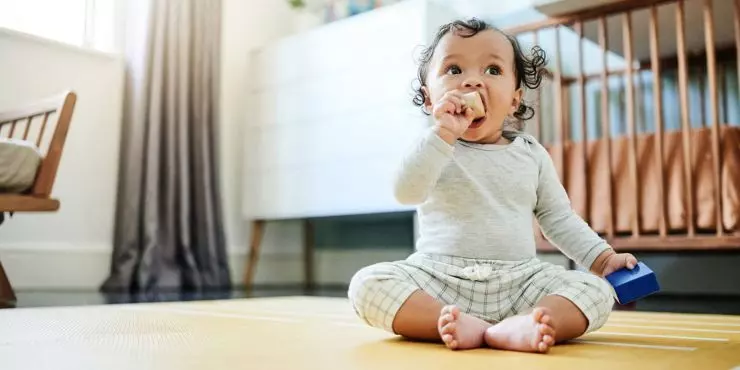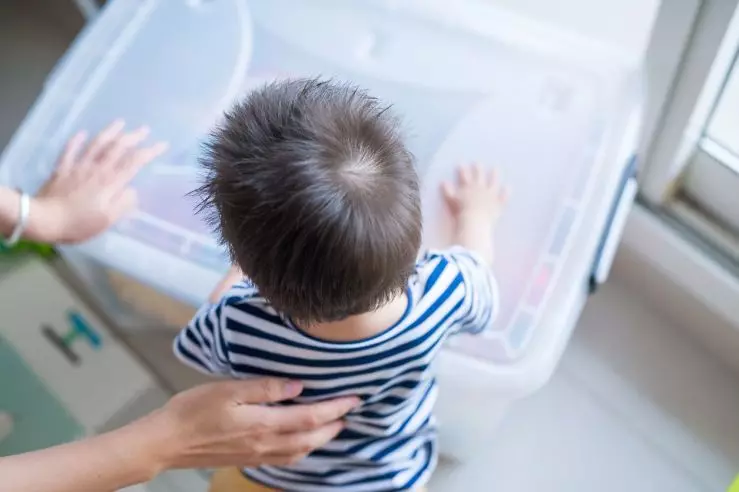
Welcoming home Baby will surely include lots of cuddles, poopy diapers, feedings and so much more. While we prepare for all the good things to come, it’s essential to be prepared for unexpected situations like choking or even the need to perform CPR (Cardiopulmonary Resuscitation) on your precious bundle of joy. Yes, this is undoubtedly scary for us as parents to think about, but we cannot stress the importance of knowing the steps to take if your baby is choking, needs CPR or other first aid.
Risks of Babies Choking
Babies are at risk of choking on small objects, food, or liquids due to their limited ability to chew and swallow effectively. Common choking hazards for babies include small toys, coins, buttons, and pieces of food. It's crucial for parents to be aware of these risks and take preventive measures.
How to Tell if Your Baby is Choking
- Difficulty or inability to breath
- Unable to cry or make noise
- Weak cough
- Changing skin color to a pale or bluish color
- Loss of consciousness
What to do if Your Baby is Choking
- Do your best to stay calm; this can help you think more clearly about what to do next
- Check their mouth to see if you can safely remove the object from their mouth, but be very careful to not push it further down into their throat
- Begin back blows and chest thrust if needed - see below for more details on how to perform these.
- If the baby is still choking and hasn't improved, call 911 or your local emergency number immediately. Keep the phone nearby so you can call for help if needed.
- Keep trying back blows and chest thrusts until the object is removed, help arrives, or the baby becomes unresponsive.
- If your baby becomes unconscious and unresponsive, start CPR (Cardiopulmonary Resuscitation) until professional medical help arrives.
How to Perform Back Blows (Recommended for babies under 1 year)
- Place your baby face down on your forearm or thigh, ensuring their head is lower than their chest.
- Support your baby's head and neck with your hand while holding their jaw with your fingers.
- Deliver up to five firm back blows between your baby's shoulder blades using the heel of your hand.
How to Perform Chest Thrusts (Recommended for babies over 1 year)
- Turn your baby over while supporting their head and neck.
- Place two fingers just below the nipple line on their breastbone.
- Give up to five quick and gentle chest thrusts.
When Your Baby May Need CPR
CPR for babies is a life-saving skill that all parents and caregivers should know. You may need to perform CPR on a baby in the following situations:
- If the baby is unconscious and not breathing.
- If the baby is choking and cannot cough, cry, or breathe.
- If the baby's heartbeat is absent or extremely weak.
How to Perform CPR on a Baby
- Ensure that the area is safe for both you and the baby. Look for any hazards or dangers.
- Check for responsiveness by gently tapping or shaking the baby and calling their name. If the baby is unresponsive, call 911 and prepare to begin CPR.
- Open their airway by placing the baby on their back on a firm surface. Tilt their head back slightly to open the airway.
- Check for breathing. Look for signs of breathing for up to 10 seconds. If the baby is not breathing or only gasping, start CPR.
- Perform compressions by using two fingers (usually your index and middle fingers) to perform chest compressions. Press down about 1.5 inches (about 1/3 the depth of the chest) at a rate of 100-120 compressions per minute.
- Give rescue breaths. After 30 chest compressions, give 2 rescue breaths. Cover the baby's mouth and nose with your mouth and give gentle breaths, watching for chest rise.
- Continue CPR: Continue with cycles of 30 compressions followed by 2 rescue breaths until the baby starts breathing, shows signs of life, or medical help arrives.

Other First Aid Tips for Parents
- Keep small objects, toys, and foods that pose choking hazards out of the baby's reach.
- Enroll in a certified CPR and first aid course designed for infants and children to gain the necessary skills.
- Secure cabinets, install safety gates, and cover electrical outlets to create a safe environment for your baby. Learn more about baby proofing your home.
- Keep your baby's room at a comfortable temperature and avoid overheating, as it can be a risk factor for Sudden Infant Death Syndrome (SIDS).
- Always place your baby on their back to sleep and avoid soft bedding, pillows, and bumper pads in the crib.
- Familiarize yourself with common signs of illness in infants, such as fever, vomiting, or difficulty breathing, and seek medical attention when necessary.
CPR and First Aid, A Skill Everyone Should Have
Remember that learning CPR and first aid for babies is essential for every parent and caregiver. We would even argue that if you are not a parent, knowing CPR is a critical skill for every single one of us. You never know when a medical emergency may occur and by knowing CPR you may save a life. Begin your CPR certification today.